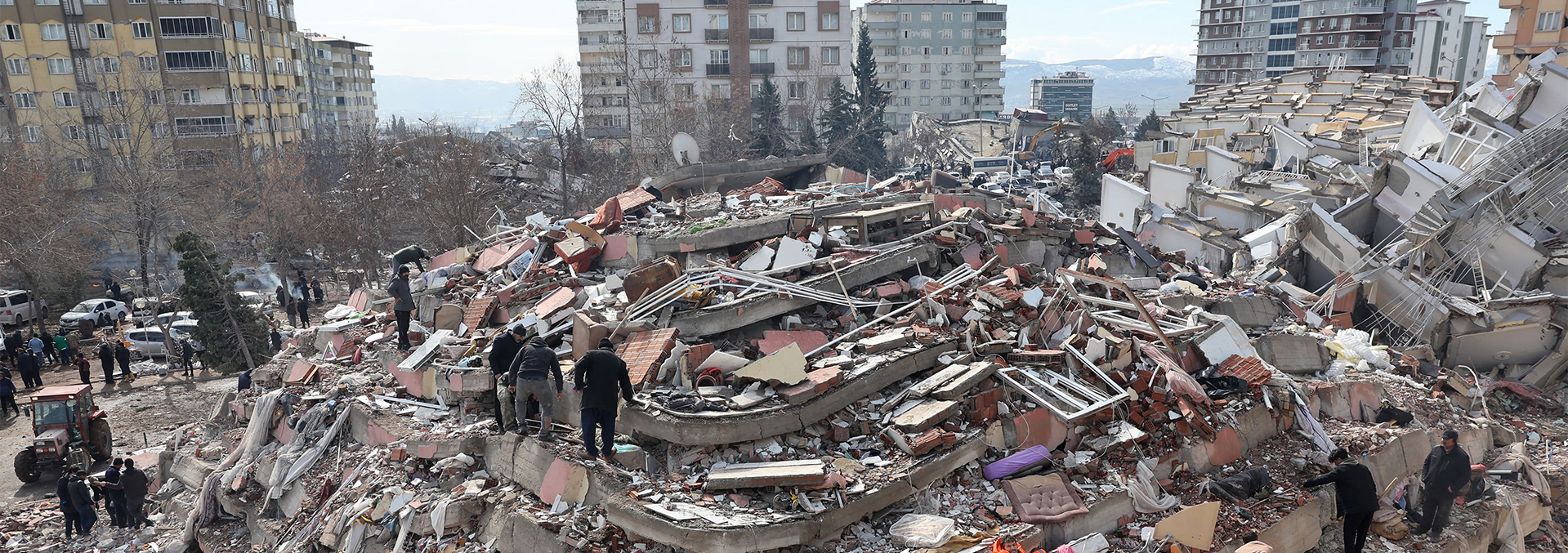Failures of multistorey buildings in Turkey & Syria due to the M 7.8 and M 7.5 Earthquakes.
Part A: Structural Collapse and Interpretation
Part B: Recorded Accelerograms, Response Spectra
Evangelia GARINI and George GAZETAS – School of Civil Engineering, National technical university of Athens.
Part A: Some remarks on the Structural collapse of multistorey buildings and one purely Geotechnical failure
Based on the following photos, and our experience from the Kocaeli (1999) earthquake, we draw some conclusions regarding the unprecedented extent of the damage. In addition to the very strong seismic shaking, with PGAs in the order of at least 0.7 g -1 g, the following structural deficiencies (that are clearly identified in these photos and are
evident in perhaps all the collapsed buildings) were truly fatal:
- Very thin columns, but rather thick slabs
- Very inadequate steel reinforcement (in size and number of longitudinal bars)
- Transverse reinforcing bars of inadequate density and improperly tied
- NO beams !! Slabs constructed directly on columns, without continuity of the longitudinal Rebars, and no proper joints
- Nowhere to be seen Shear Walls, even in > 10-story buildings
(For comparison, a typical 2-story building in Cephalonia, Greece, is shown – from an area of similar seismicity as the region inflicted by the 7.8 earthquakes).
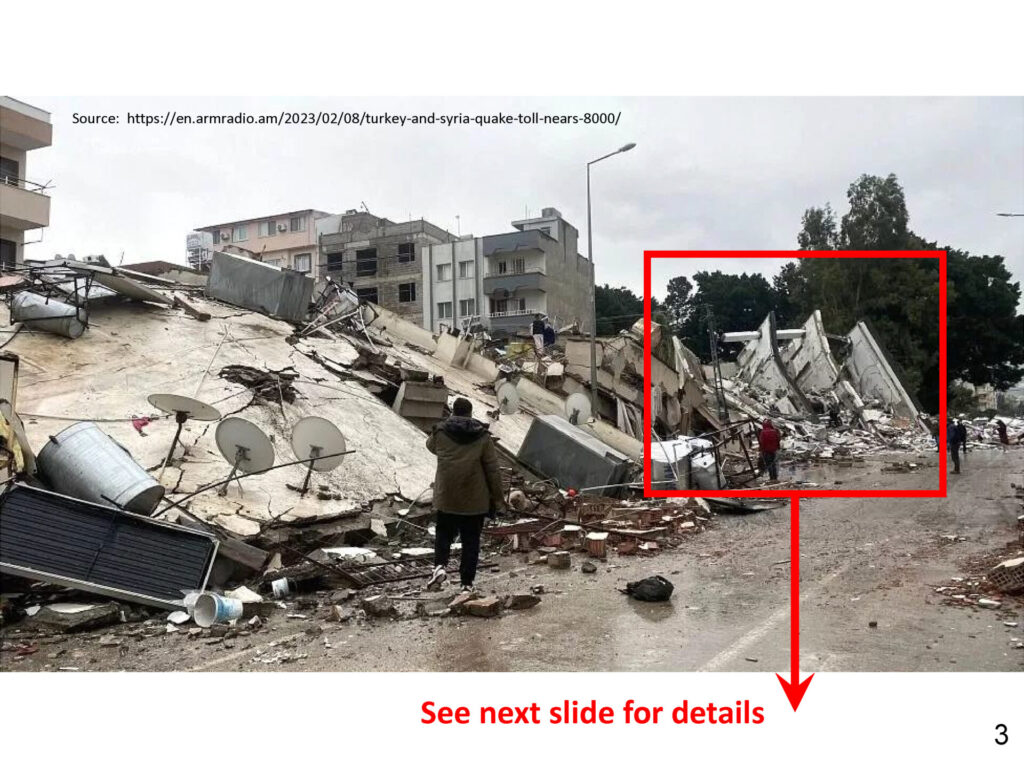
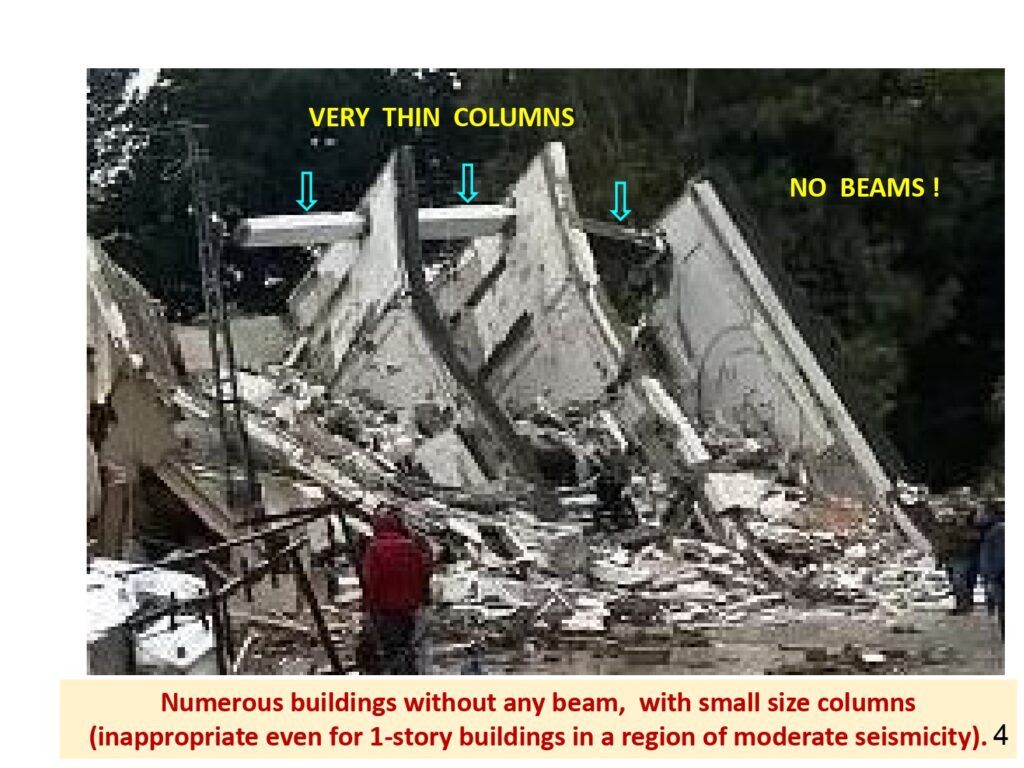

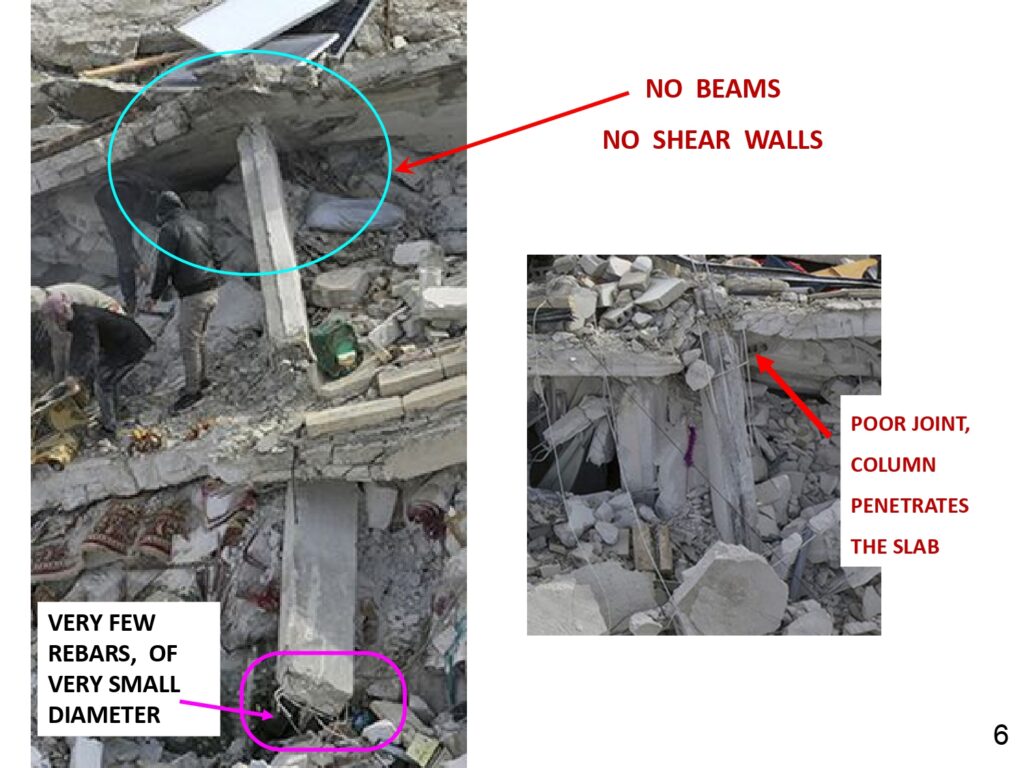


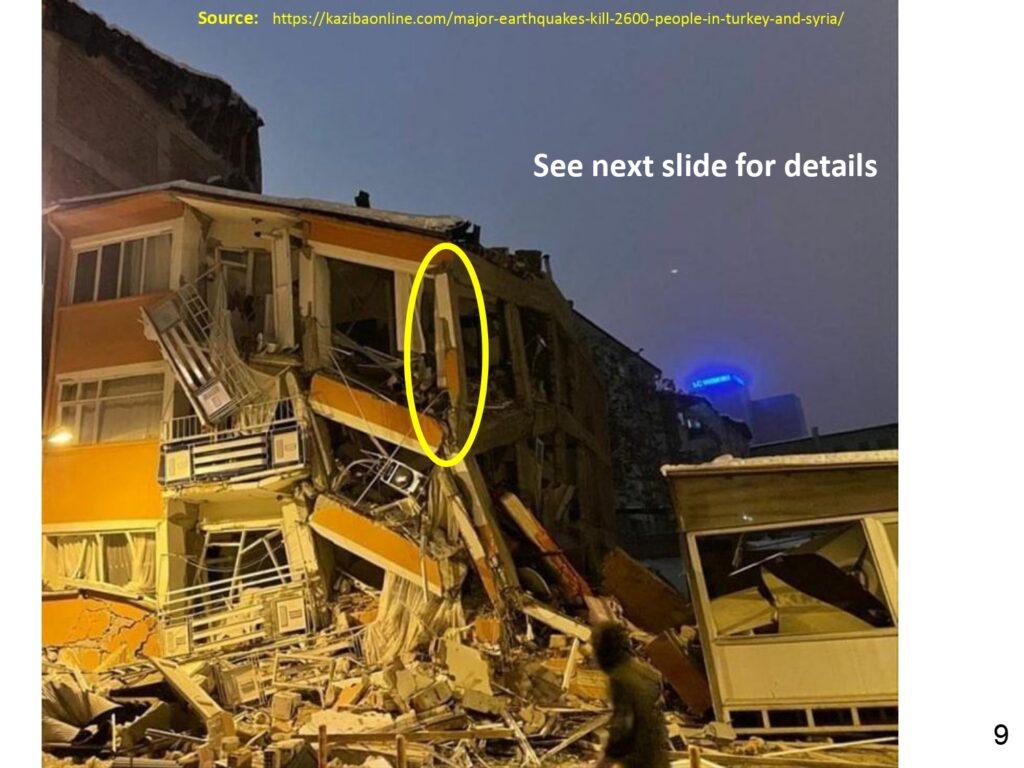
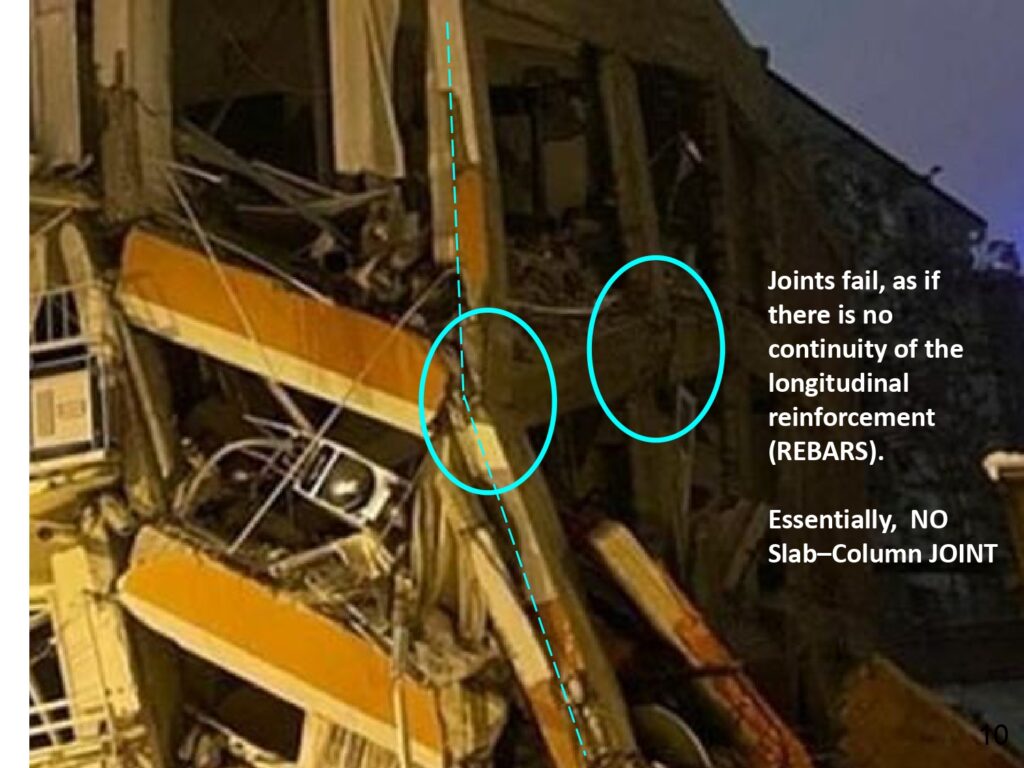
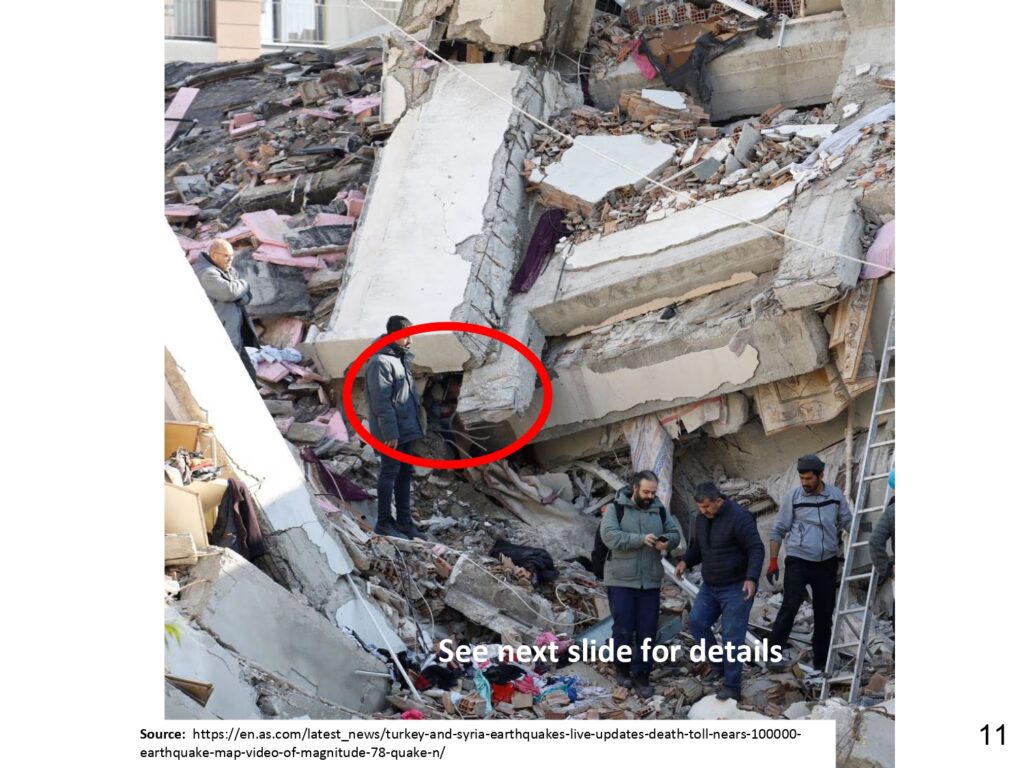
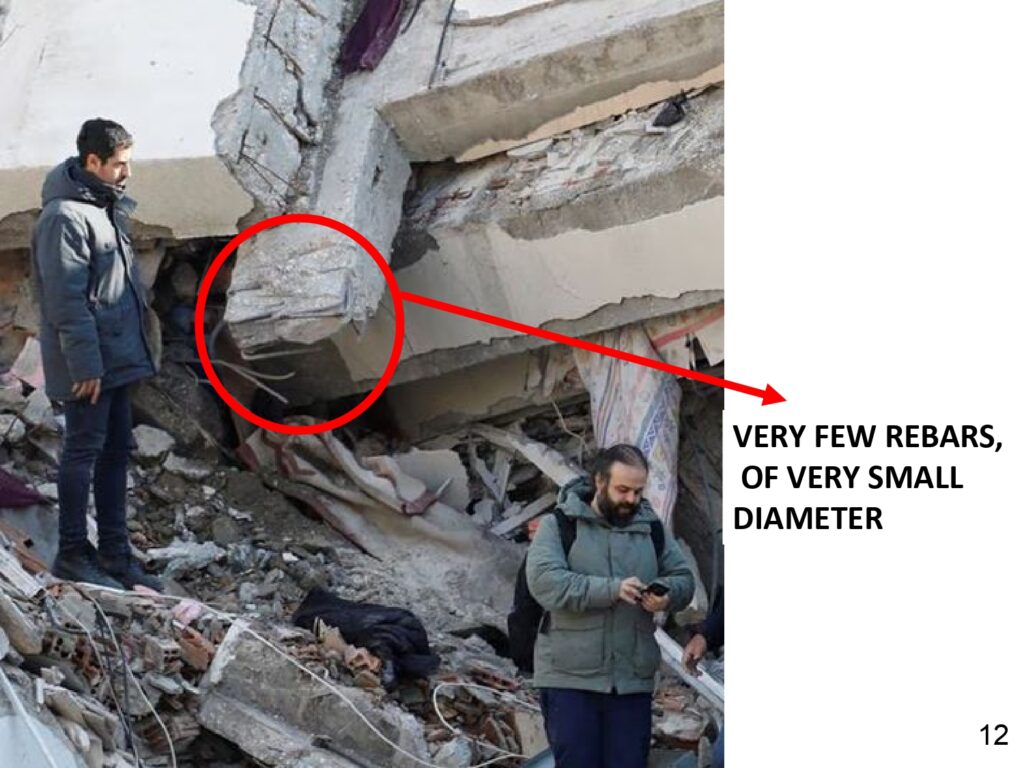
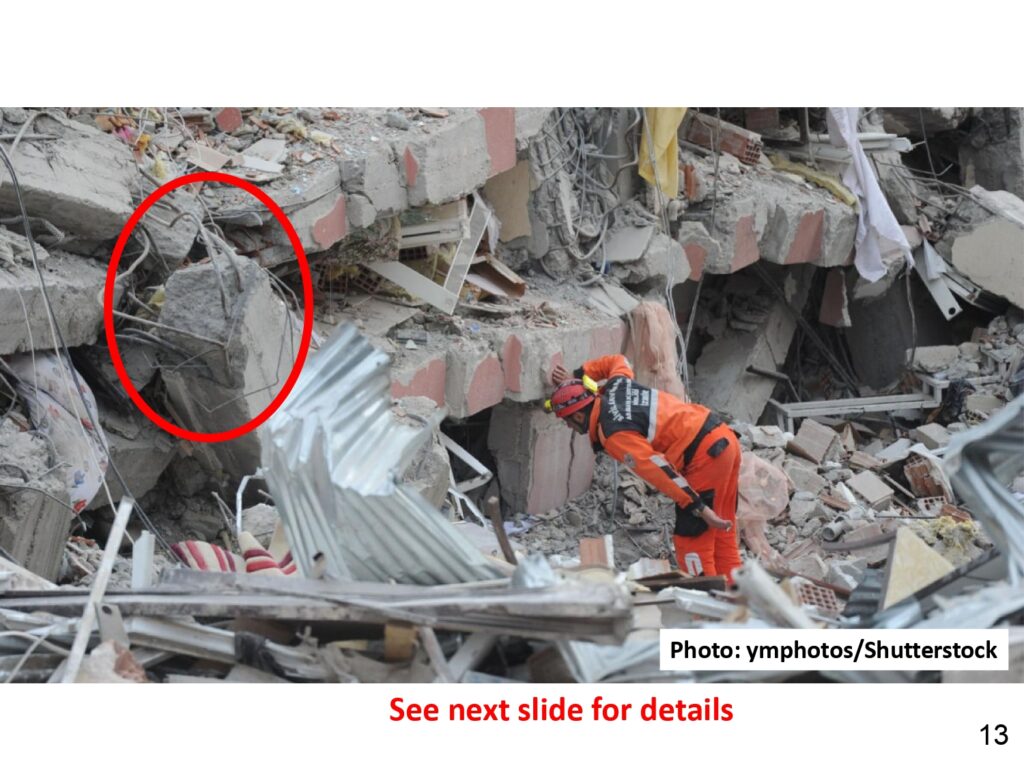
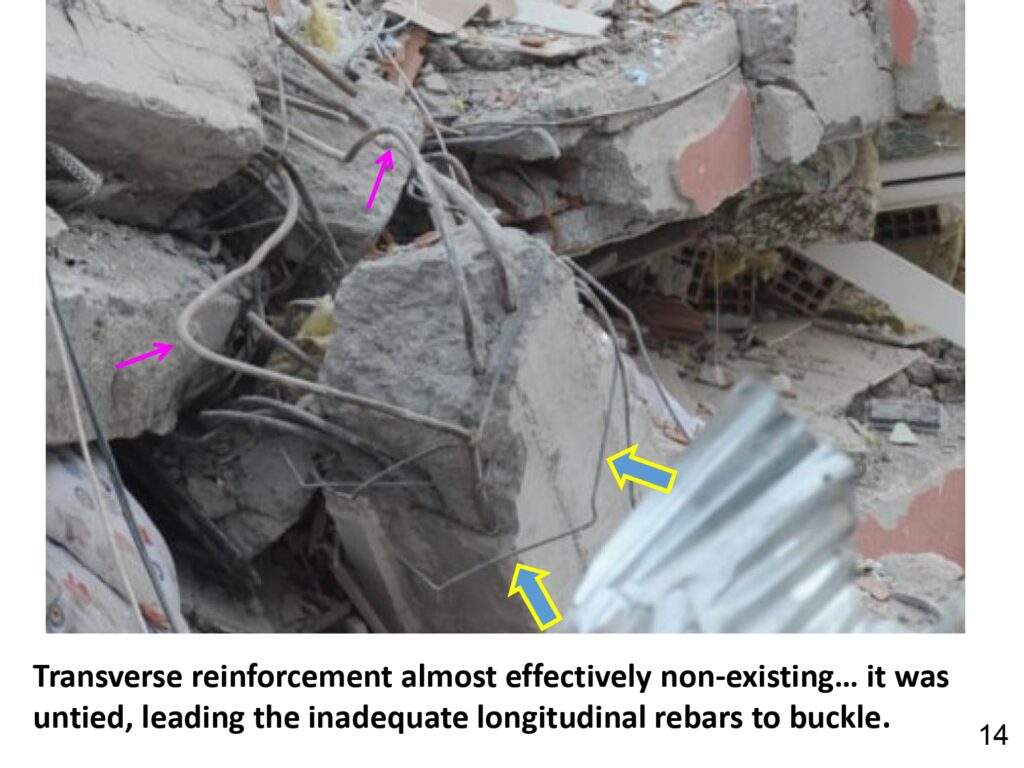

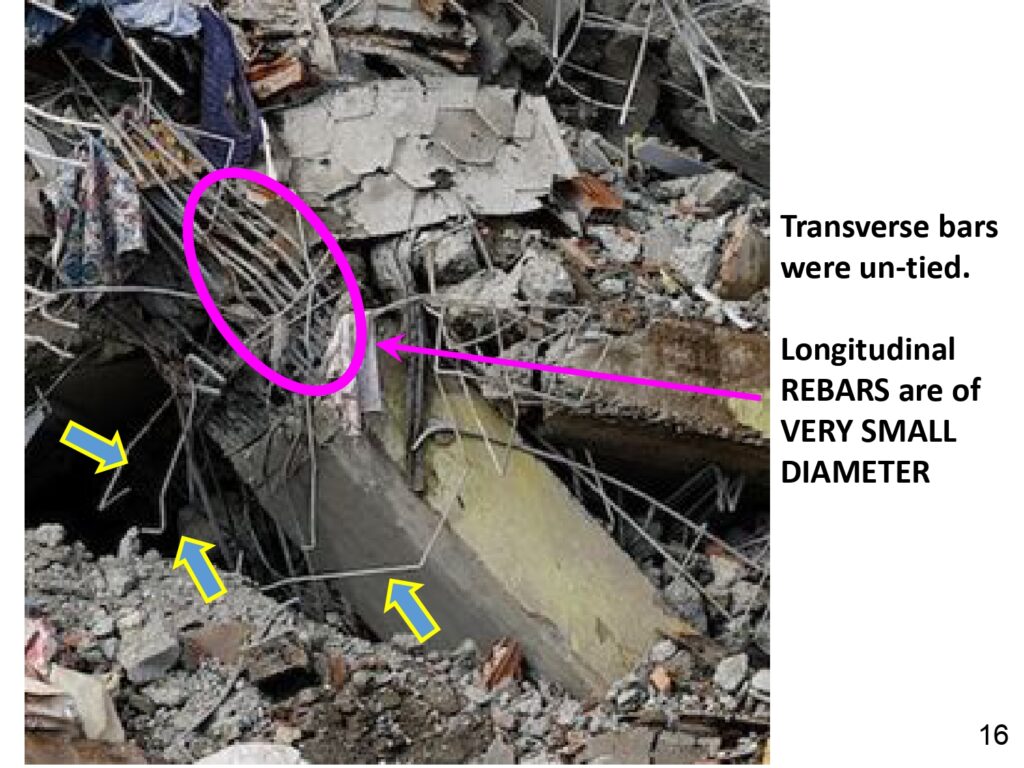



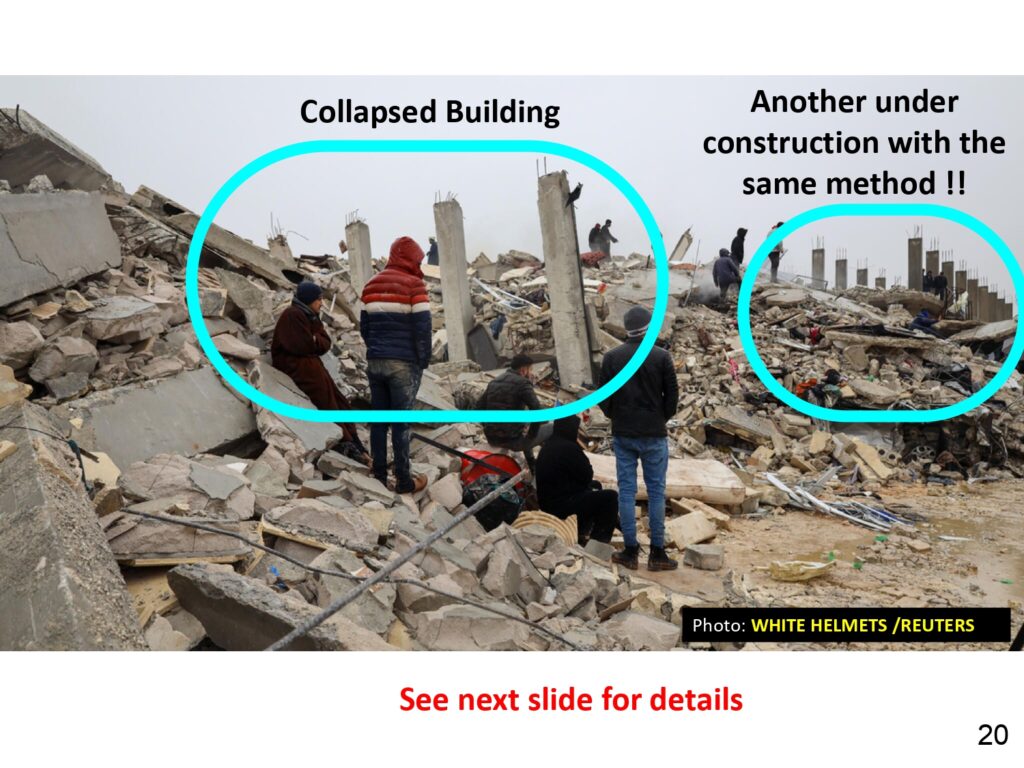


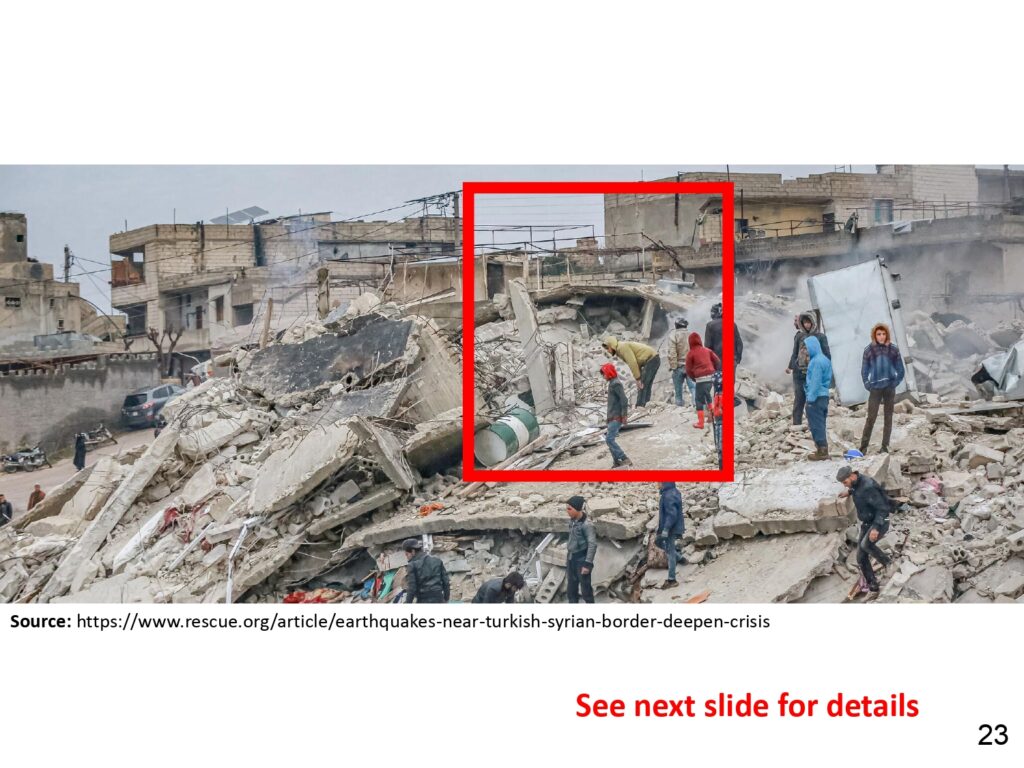
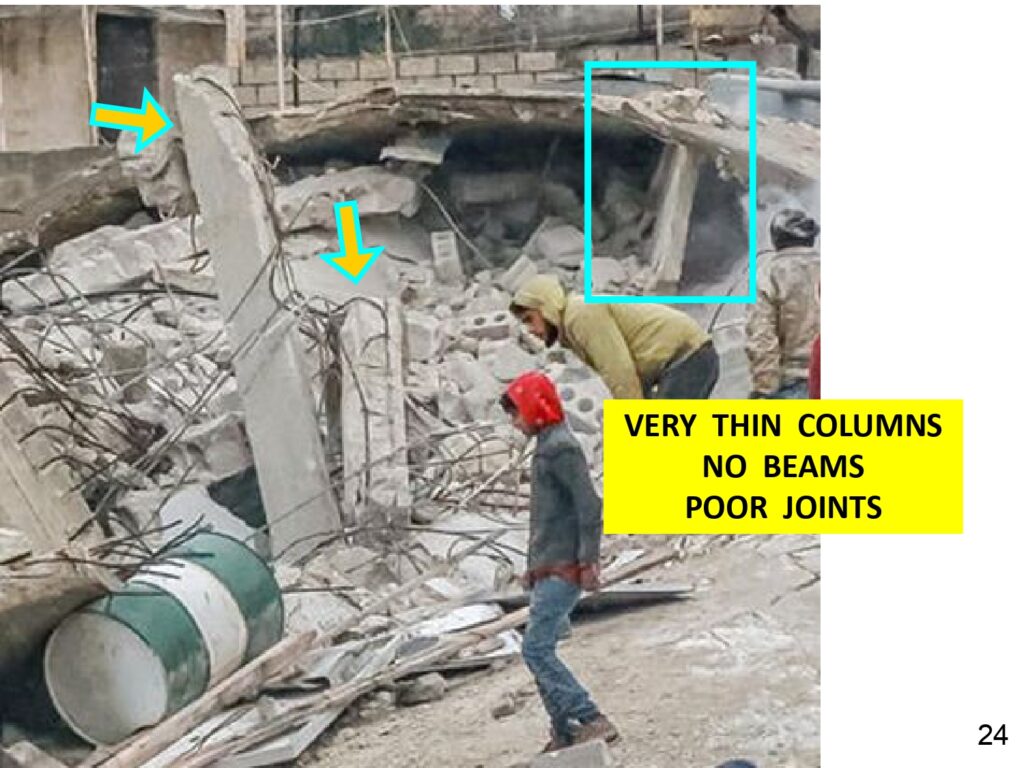
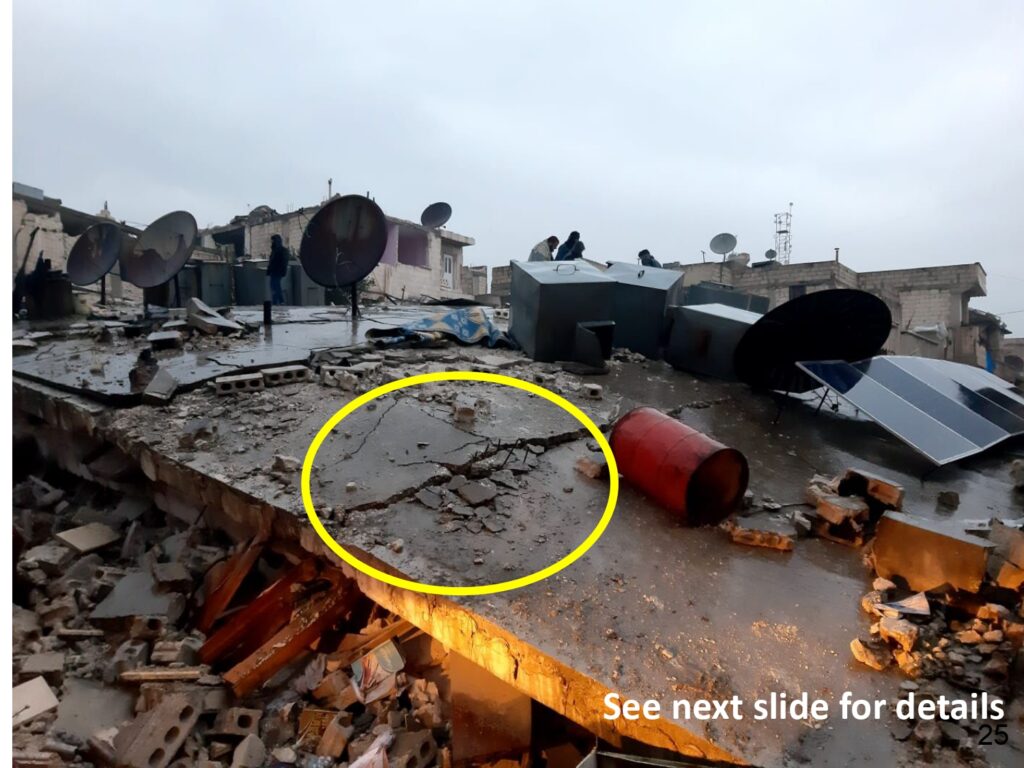
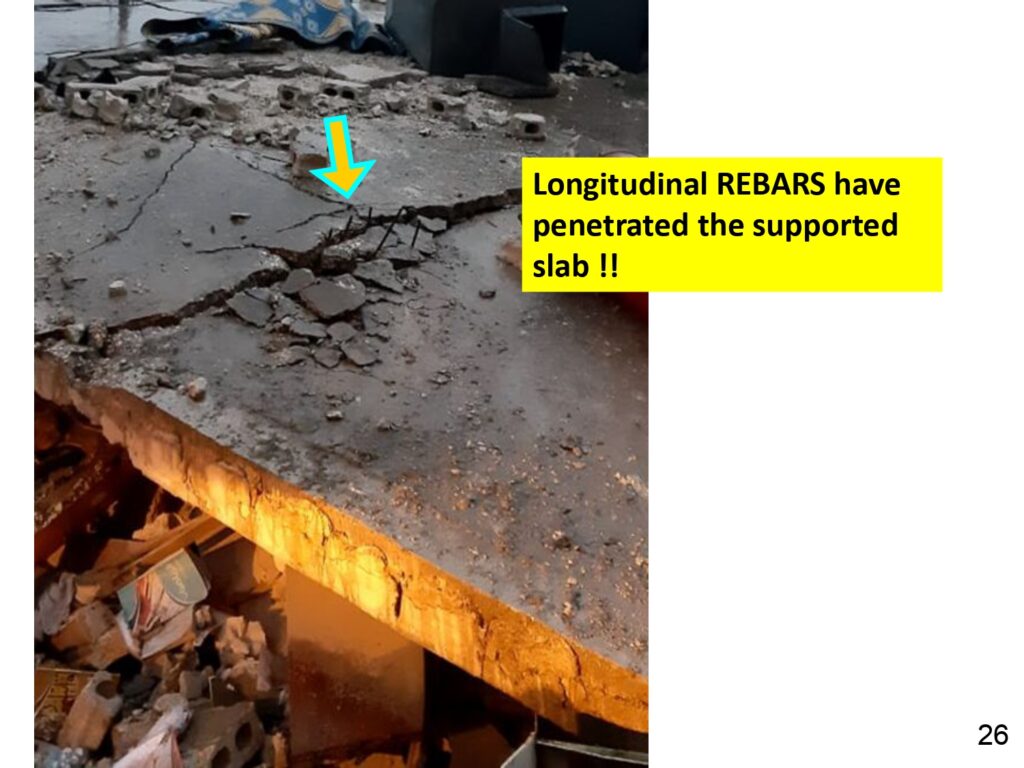
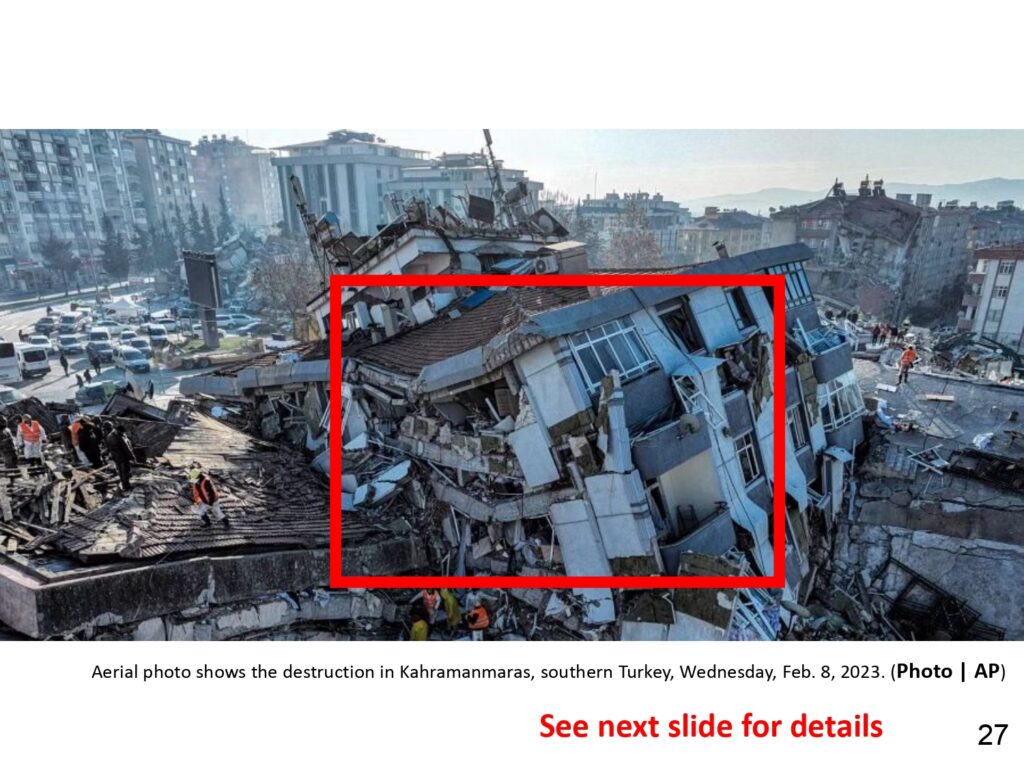
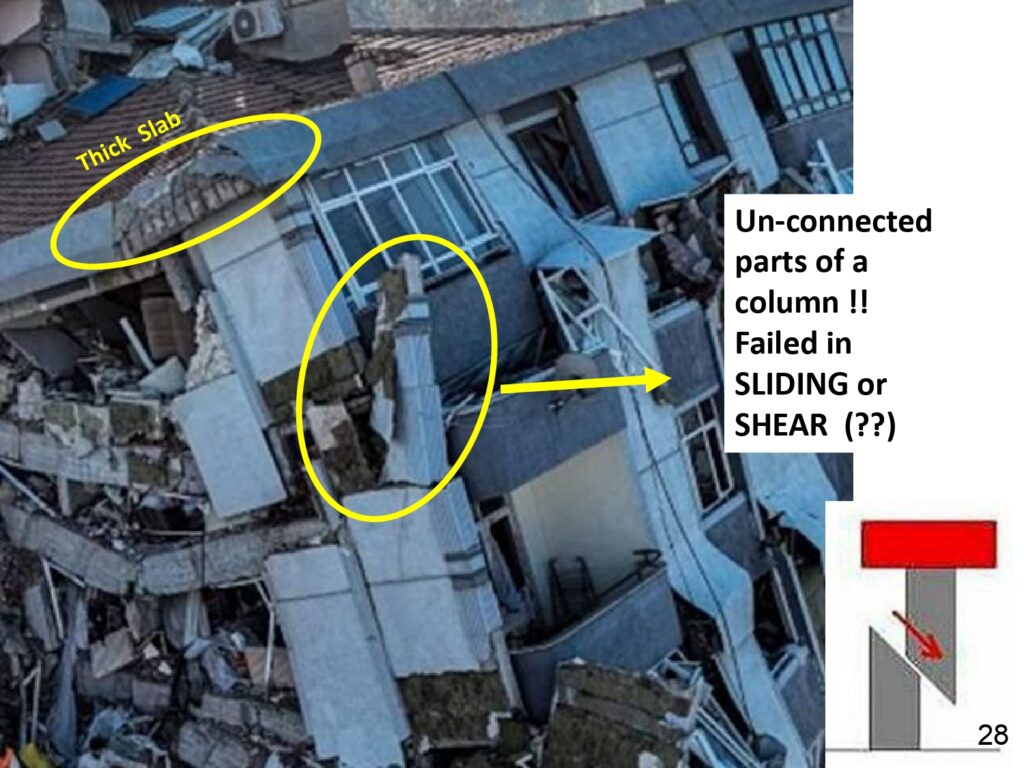
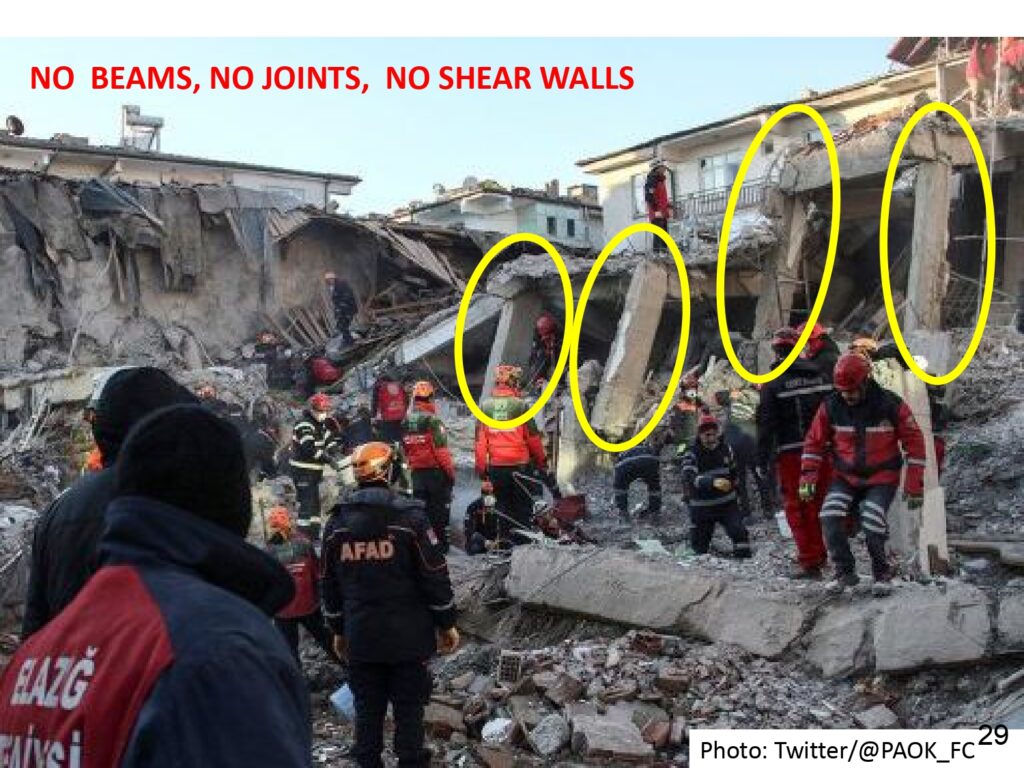

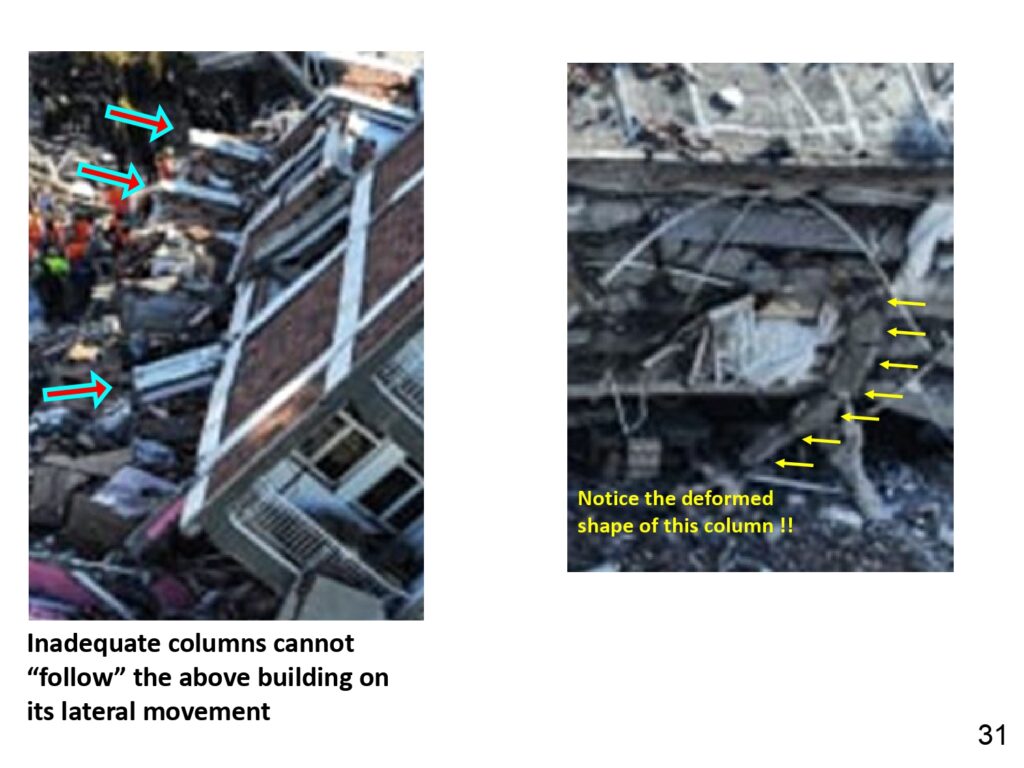
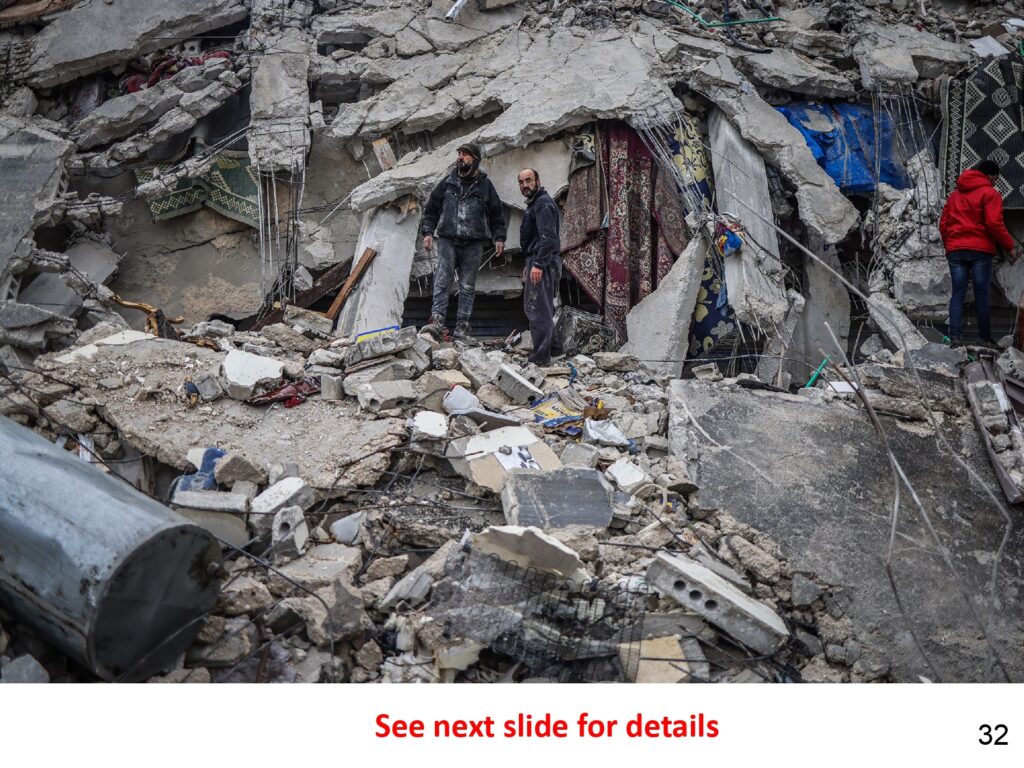
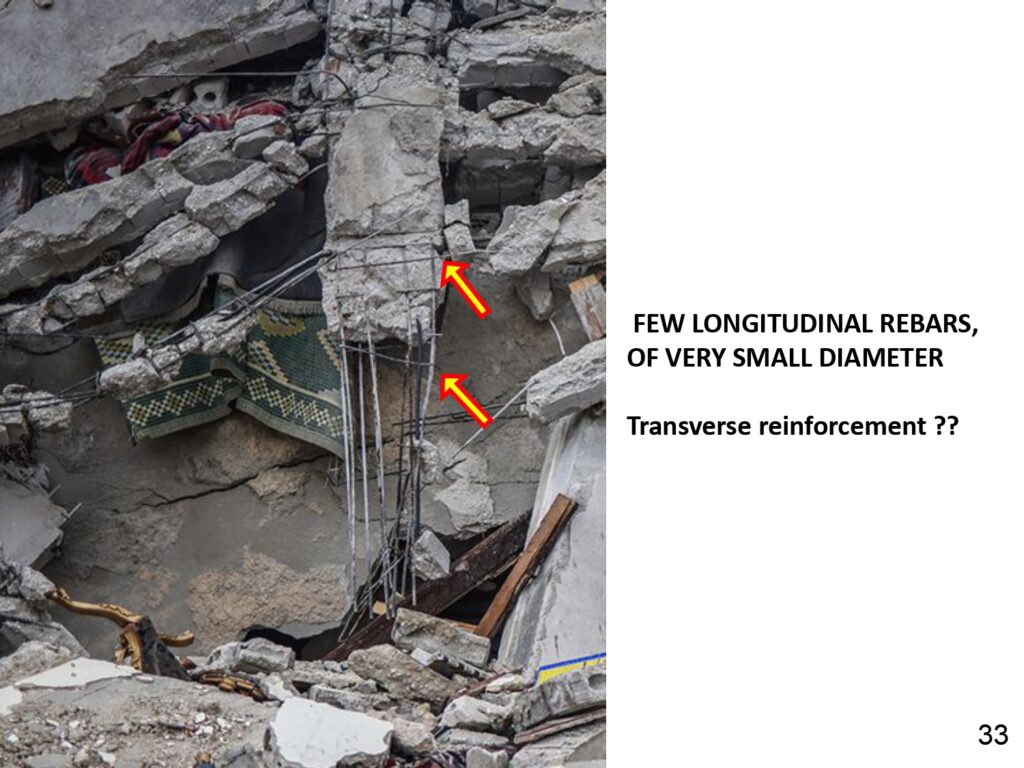

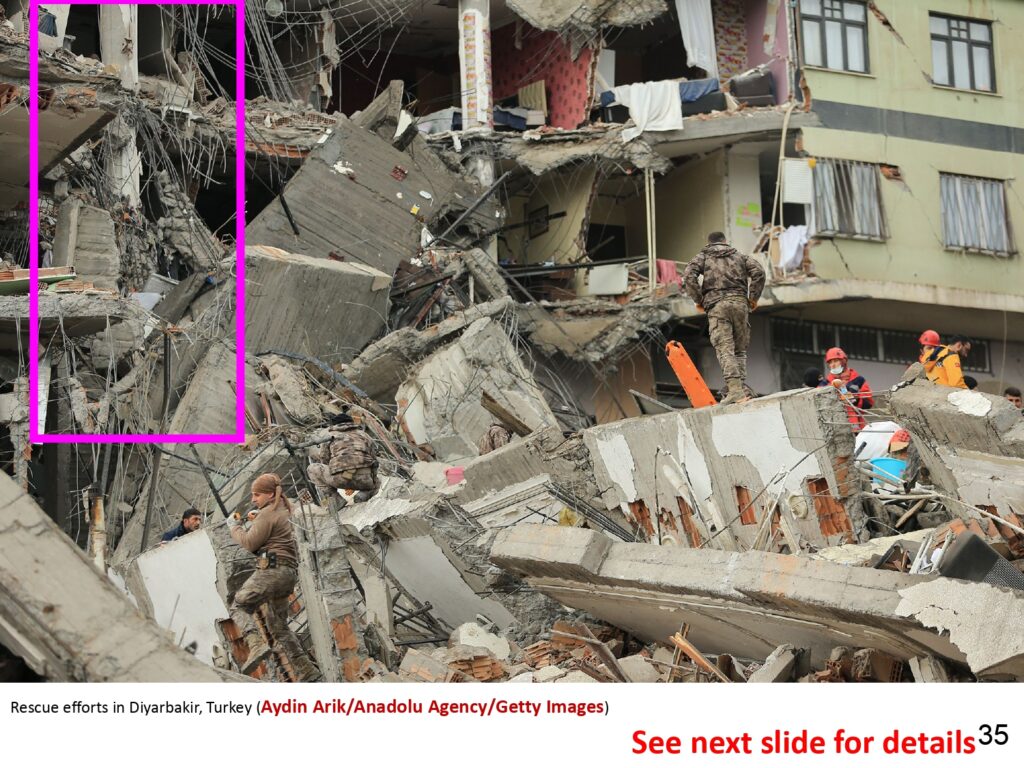
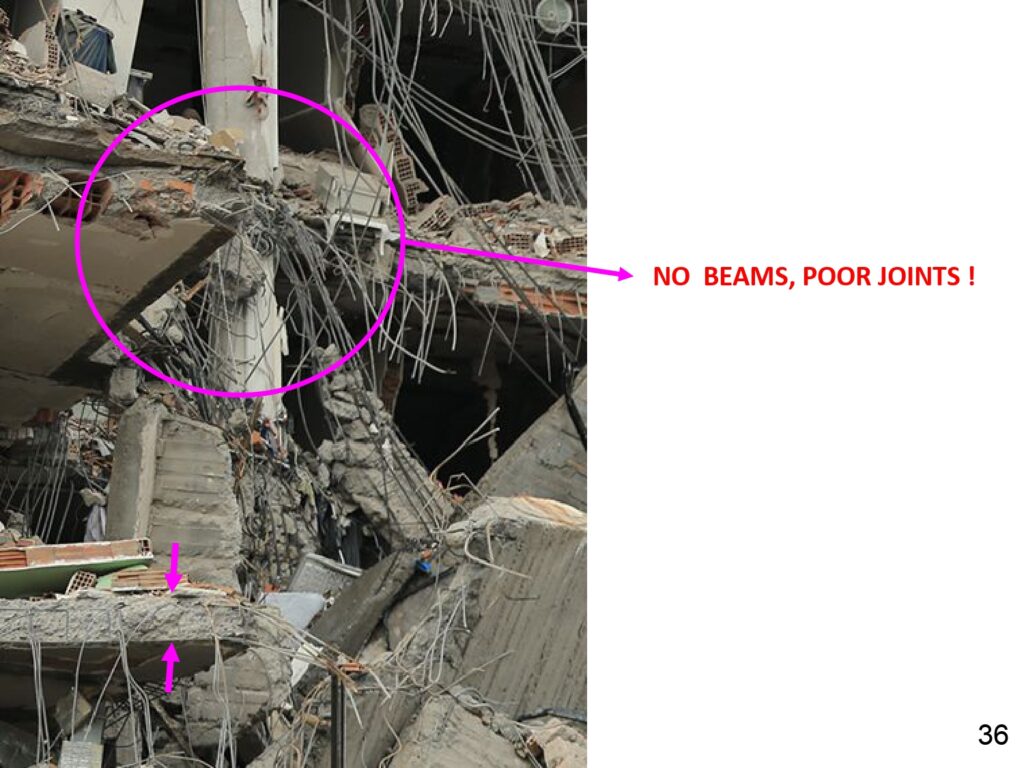
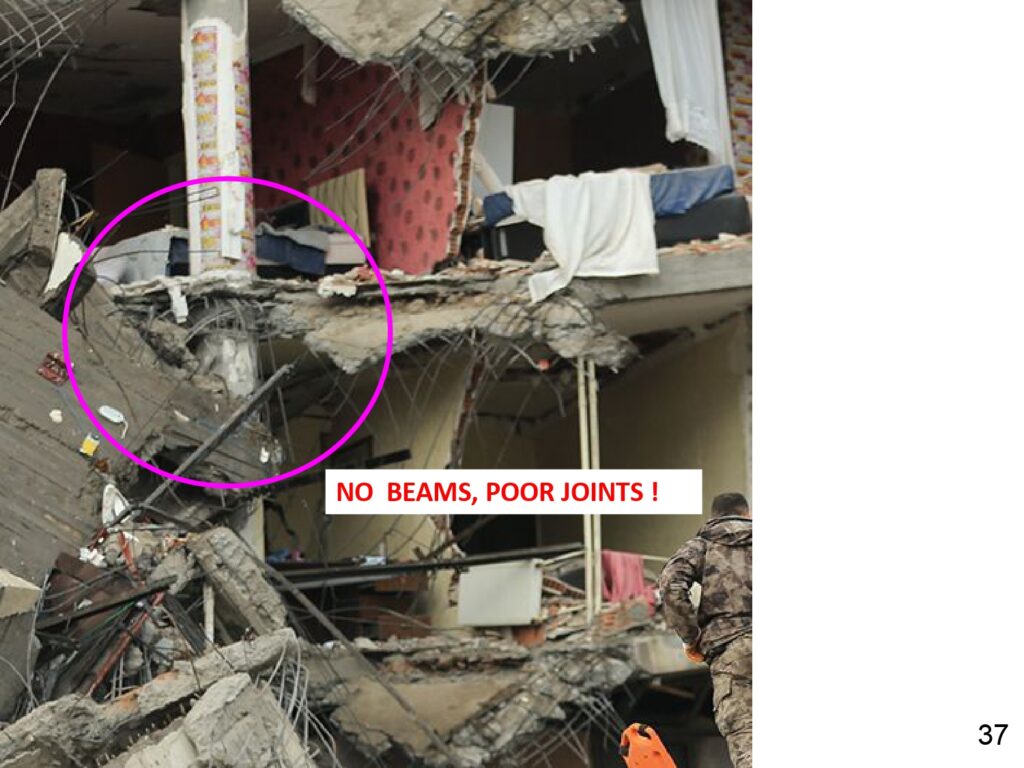
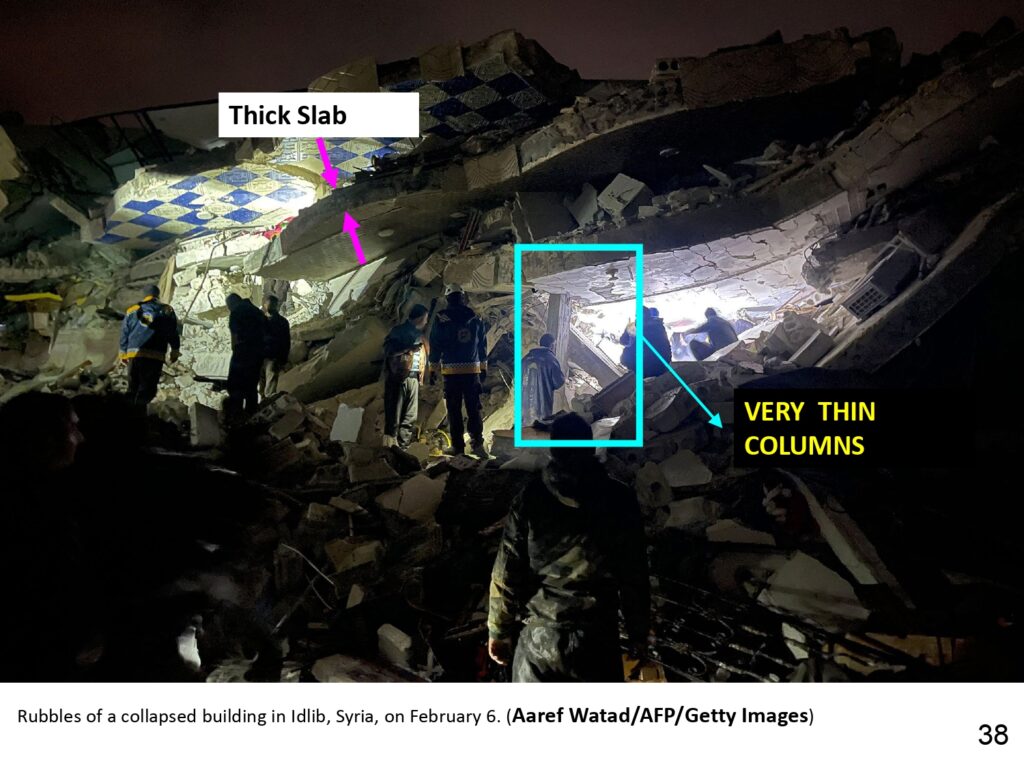
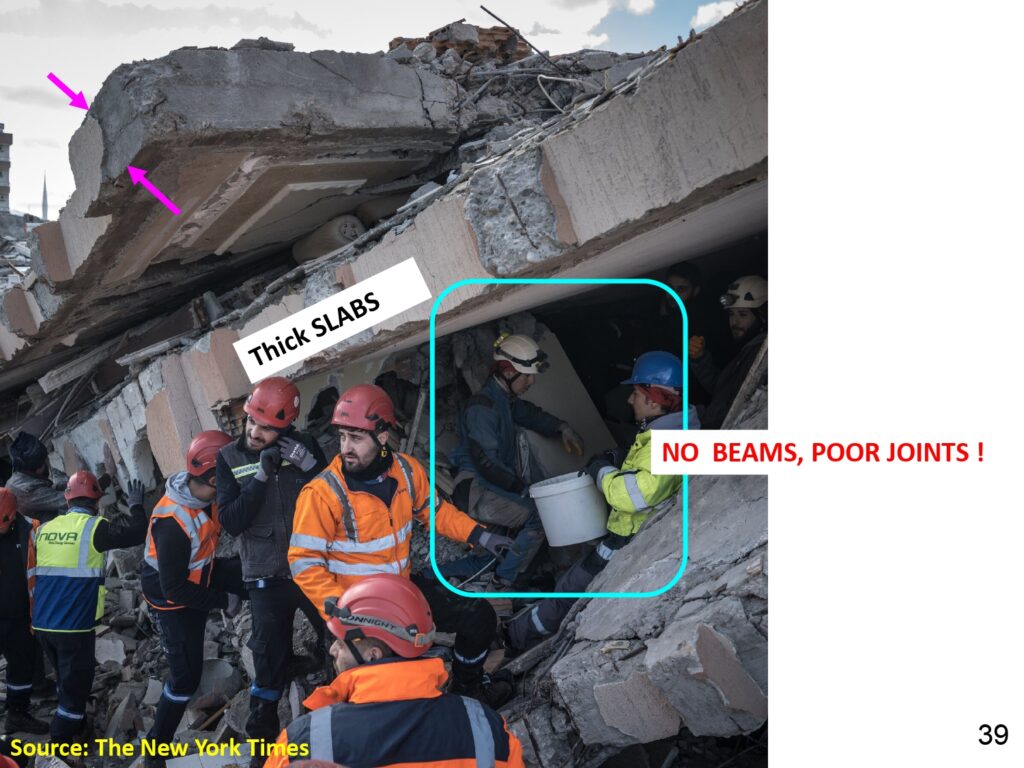
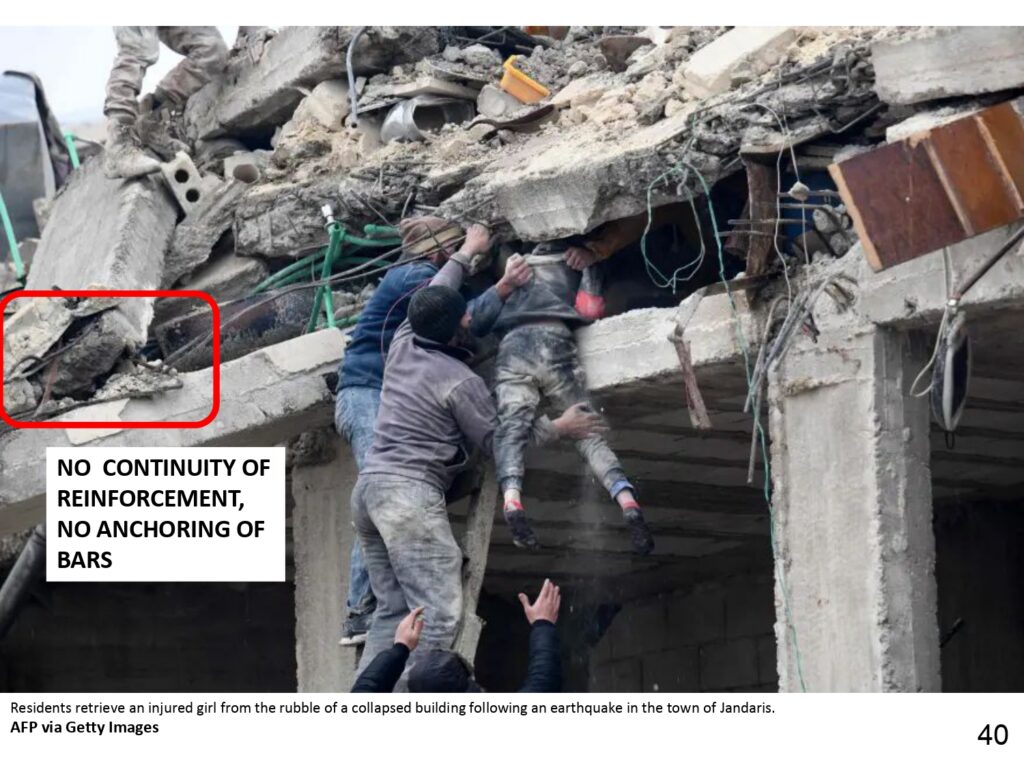
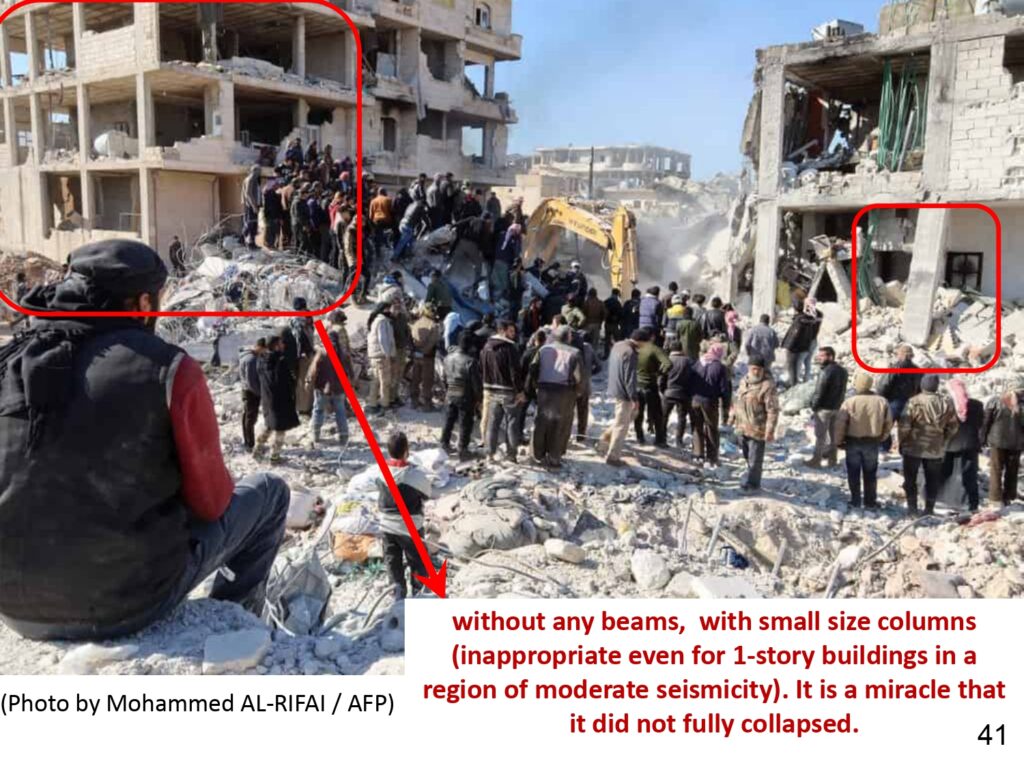
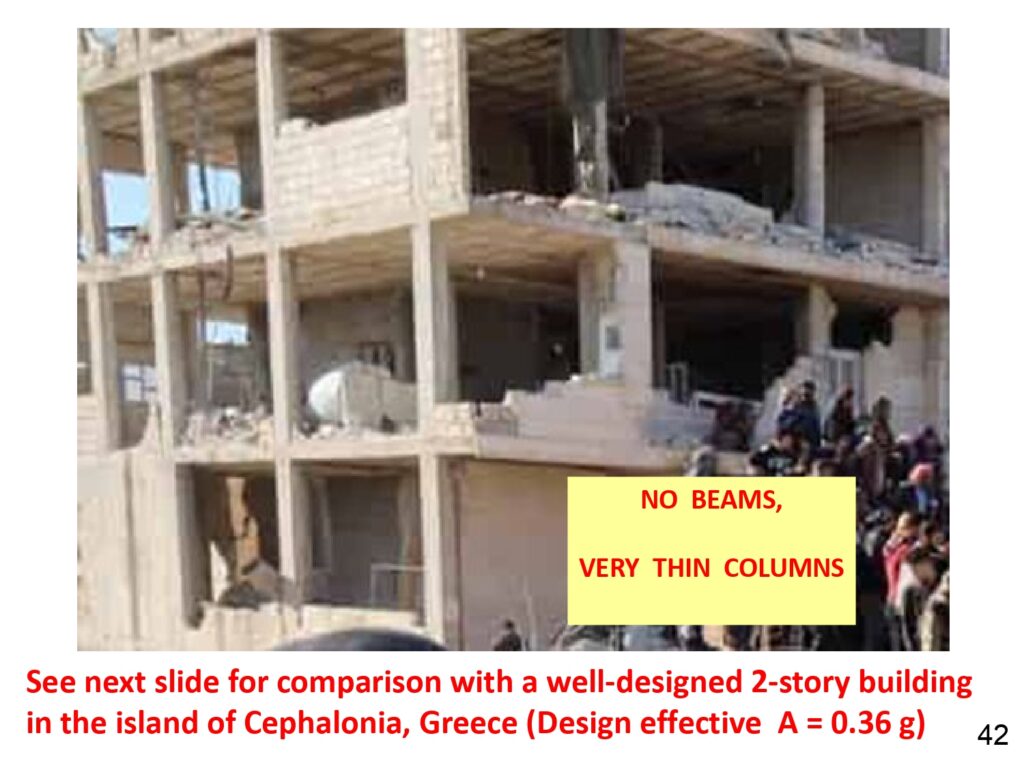
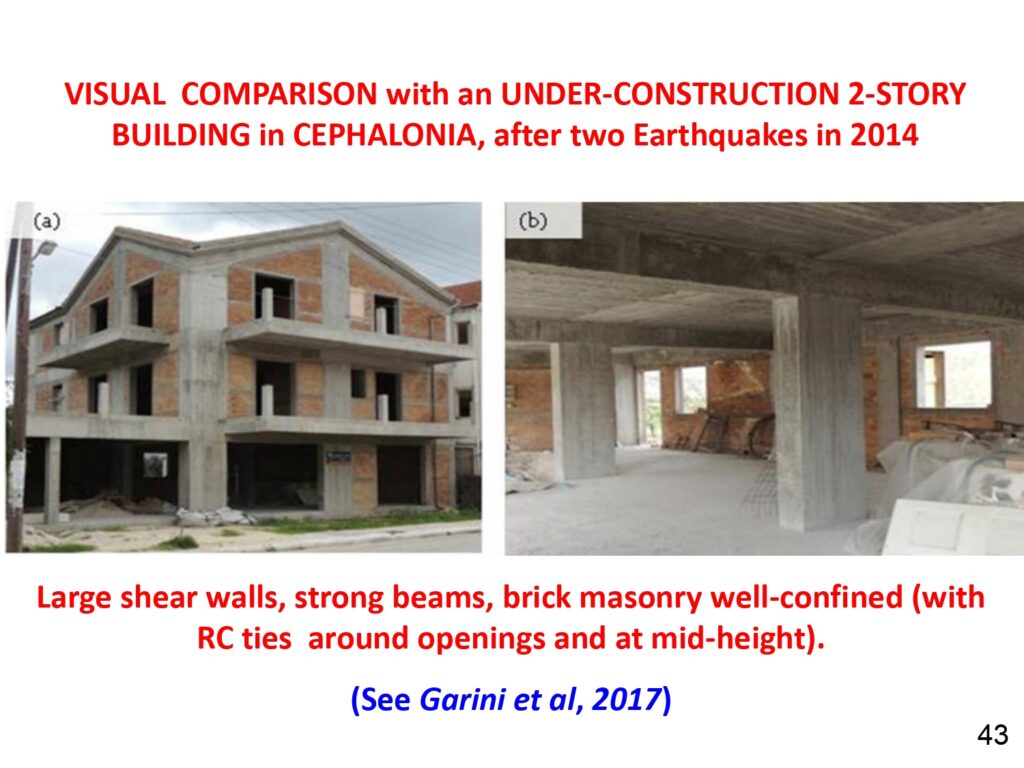
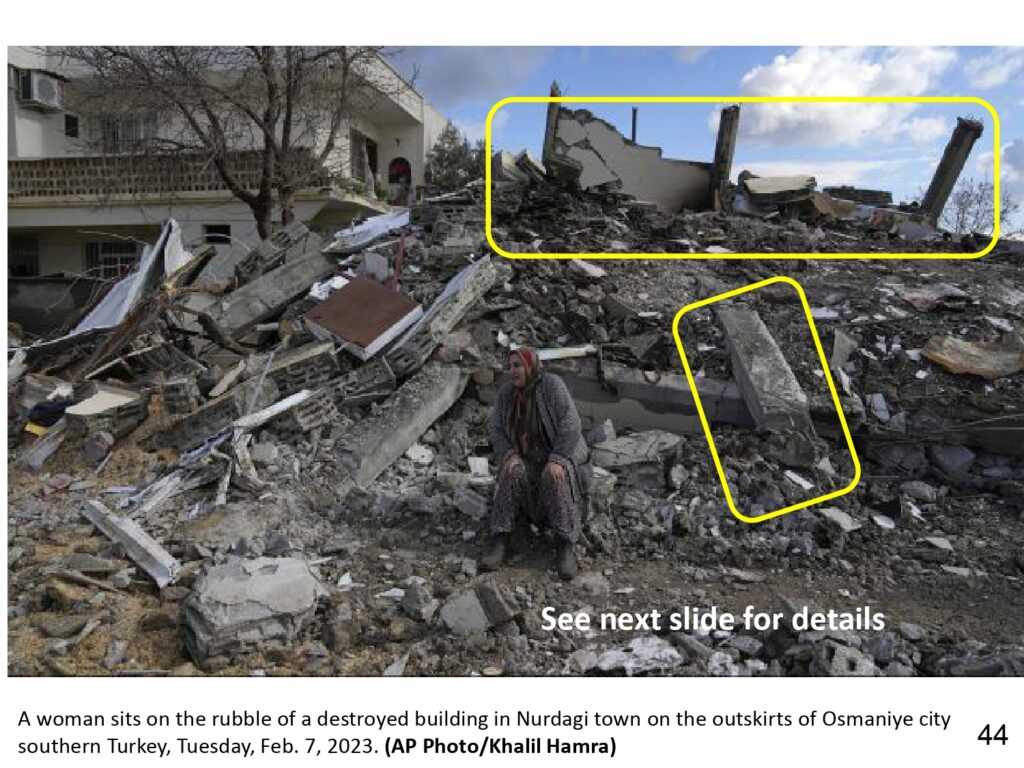
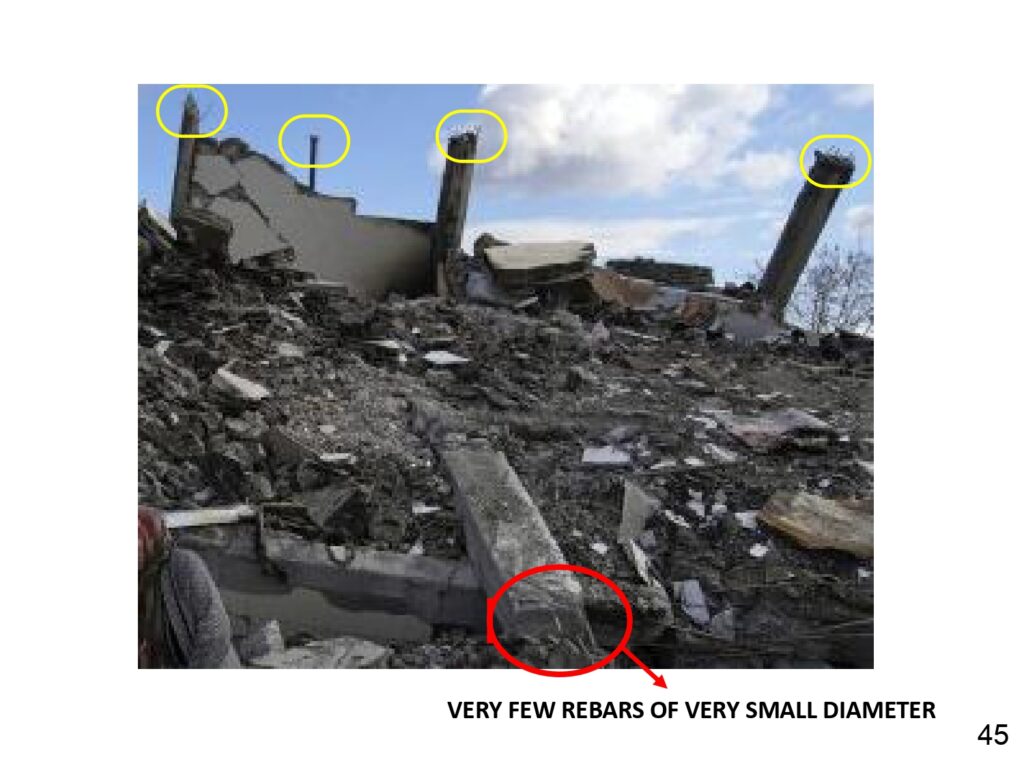
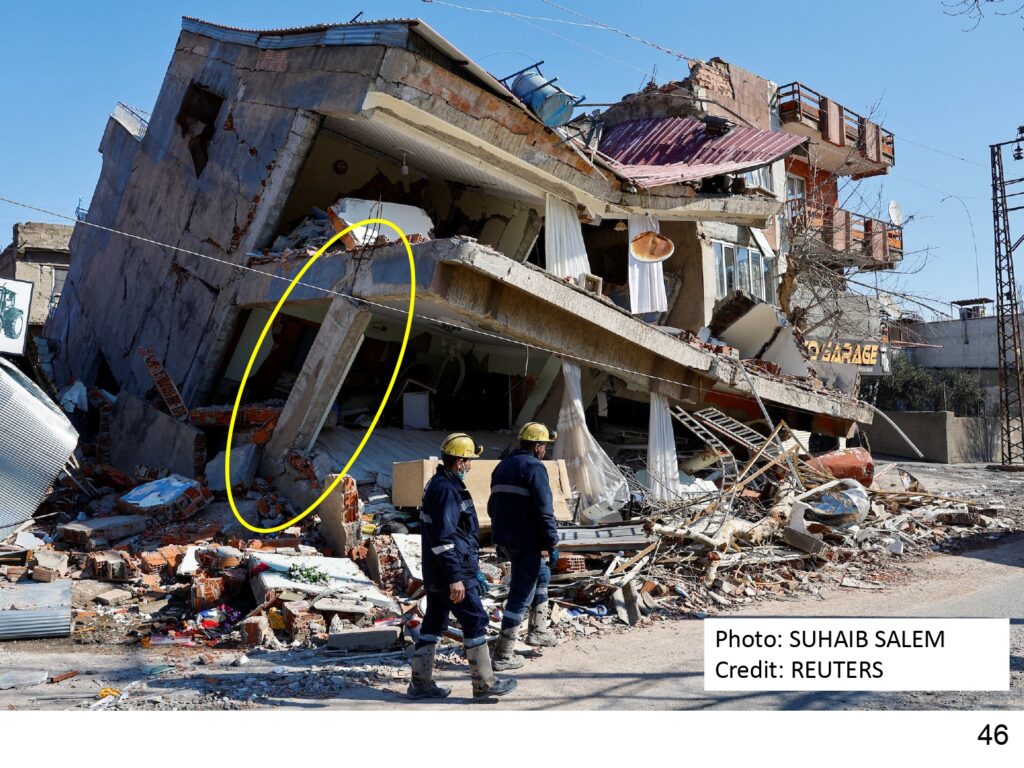
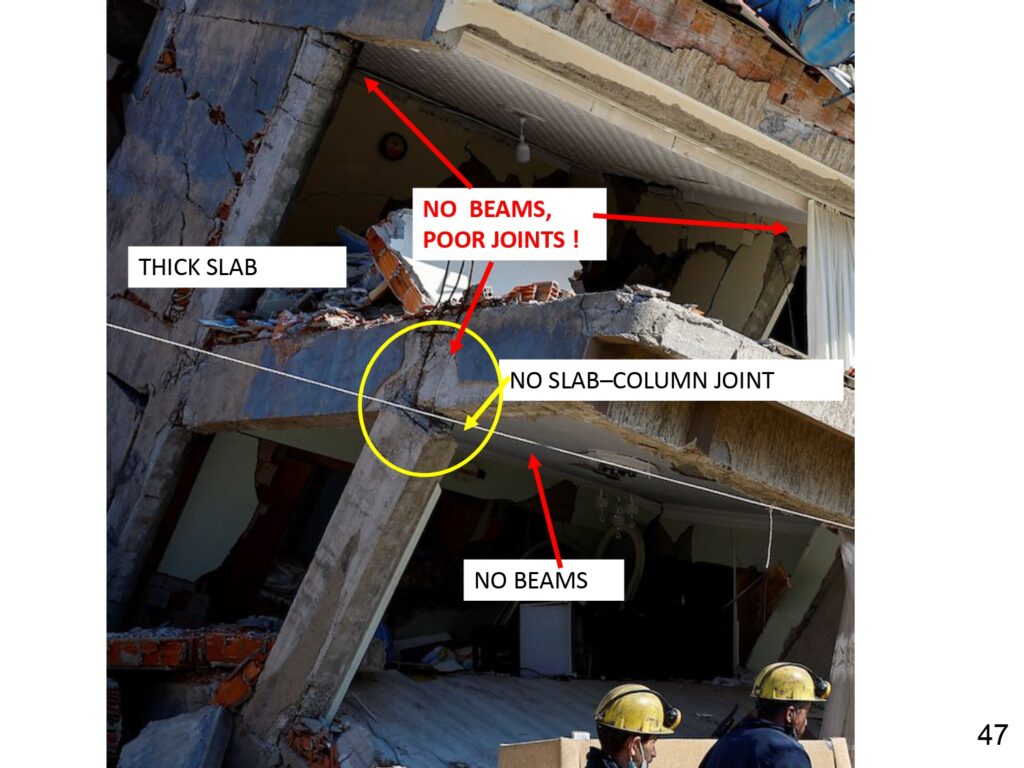

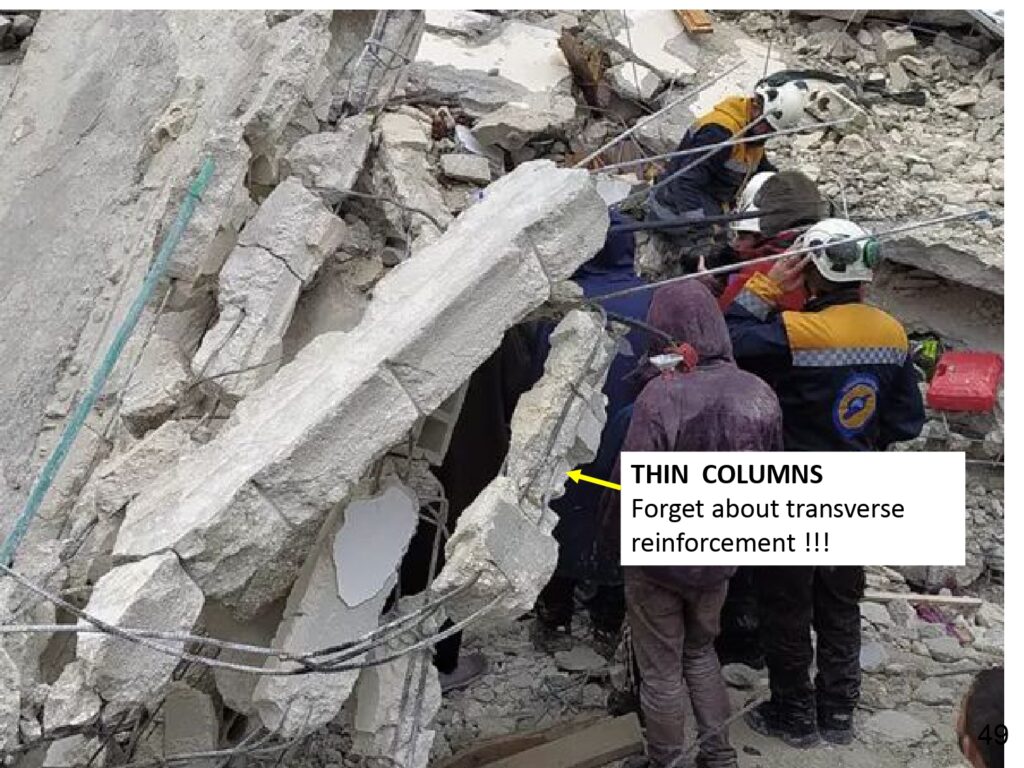
Finally, a purely GEOTECHNICAL Failure:
The overturning of a building is apparently due to bearing-capacity failure on soft soil (perhaps with a high water table) under a strong seismic moment. No evident damage in the structure. The glass windows remain unscathed! Similarly intact appears to be the foundation slab. This is reminiscent of ADAPAZARI in the 1999 Kocaeli (Izmit) Earthquake!!!
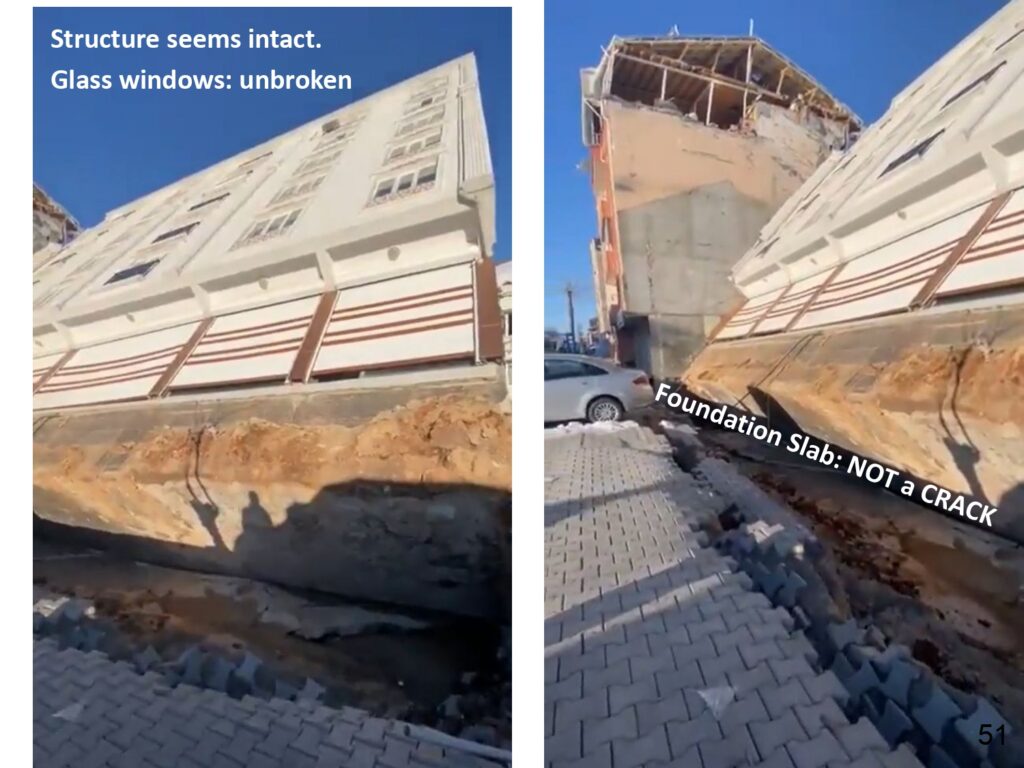
Some critical reasons for the collapse of a huge number of buildings
EXTREMELY STRONG GROUND SHAKING, PERHAPS LOCALLY SOIL-AMPLIFIED (see Part B)
DEFECTIVE STRUCTURAL SYSTEMS WITH SEVERAL FATAL TECHNICAL FAULTS, as follows:
- Very thin columns, but rather thick slabs
- Very inadequate steel reinforcement (in size and number of longitudinal bars)
- Transverse reinforcing bars of inadequate density and improperly tied)
- NO beams !! Slabs directly on columns, without continuity of Rebars, and no proper connection
- Nowhere to be seen Shear Walls, even in > 10-story buildings
Our Sources
- https://en.armradio.am
- www.worldvision.org.uk
- Associated Press: Ghaith Alsayed via AP, Ahmet Akpolat/DIA, Khalil Hamra
- Reuters: Umit Bektas, Mahmoud Hassano, Suhaib Salem, WHITE HELMETS
- Getty Images: Mohammed Al-Rifai/AFP, Anas Alkharboutli, Aydin Arik/Anadolu Agency, Aaref Watad/AFP, AFP via Getty Images,
- https://kazibaonline.com
- The New York Times: https://www.nytimes.com/
- https://en.as.com
- Shutterstock: Ymphotos/Shutterstock
- https://www.rescue.org
- USGS website: www.usgs.gov
- Twitter: @PAOK_FC, The_Georgios
- Garini E., Gazetas G., and Anastasopoulos I. (2017) “Evidence of Significant Forward Rupture Directivity Aggravated by Soil Response in an M 6 Earthquake, and the Effect on Monuments “, Earthquake Engineering & Structural Dynamics, 46: 2103-2120.

